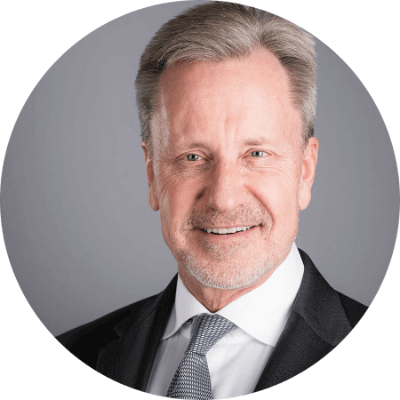 This year there were general elections in two BRIC countries.
This year there were general elections in two BRIC countries.
A wave of optimism has swept India since May when Narendra Modi was elected prime minister. The stock markets rallied on the “Modi effect.” Business leaders expect a surge of badly needed foreign investment, a reduction in suffocating regulations, and a boom of much needed infrastructure.
In Brazil, the stock markets were rattled by the close re-election of Dilma Rousseff. Business leaders and others are absolutely gloomy, predicting the economy will continue to stagnate, burdened by an inefficient government and a corrupt political system.
Clearly, people’s positive or negative feelings about elections aren’t the same as their natural optimistic or pessimistic orientation to life. Some Indian pessimists are feeling upbeat and some Brazilian optimists are feeling down about these results. Research shows that after elections, and within a short period of time, people generally return to their regular orientations toward life—either as a more optimistic or pessimistic person. Indians and Brazilians will soon be back to their old views of life.
That’s because optimism and pessimism are strong, stable traits that reflect our coping strategies. We live in an uncertain world. To cope with uncertainty, most people basically assume that things will either turn out well (the optimists) or turn out badly (the pessimists). Which are you? Here’s a quick test: Were you inspired to see Warren Buffett labeled “The Optimist,” on the cover of Time magazine? Or are you warmed by the tagline of an online magazine called The Pessimist: “Expecting the worst. Never disappointed.”
It’s probably a good thing for us that so-called rationalists (tagline: “Why so emotional?”) are in the minority because studies show that without optimism or pessimism people don’t accomplish as much. These natural traits motivate people to take action—different actions, but at least action.
If you’re a pessimist, you tend to focus on safety and security. Pessimism drives you to seek and find safe havens, establish clear advantages and protect resources. When pessimistic about needed economic recovery, for instance, families save money and companies build war chests. When the news is bad and likely to get worse, a pessimist is your best ally because pessimists thrive on fixing errors. To get the most out of the pessimist in your family or your company, researchers say, you need to provide “targeted negative feedback” from a trusted authority. Pointing out what has gone wrong or what’s less than perfect will motivate the pessimist to innovate products, improve plans and solve problems. For this reason, pessimists can make good operational leaders. But pessimists in the corner office or leading the family are less likely to foster a culture of growth, risk taking, and wealth creation.
According to Jeremy Dean, a researcher at University College London, optimists prefer to think about how they and others can advance and grow. Optimists also have larger social networks, solve problems cooperatively, and are more likely to seek help in difficult situations. They make good spouses. People with optimistic spouses were healthier in a 2014 study by researchers at the University of Michigan2. To energize an optimist, positive feedback is absolutely essential, because the optimist builds on incremental achievements and a sense of positive movement.
Choose optimists to lead growth activities in your family and company. Entrepreneurs, for example, are much more likely to be optimists. But if you choose an optimistic business leader, you should probably pair them with “reality testers,” not necessarily authority figures, advises University of Pennsylvania professor Martin Seligman, the father of positive psychology.
For decades, scientists regarded optimism and pessimism as fixed traits we are born with. But last year, researchers at a German University reported that 18-39 year olds were more optimistic than people 40-64, and far more than people 65 and older.3 For reasons we don’t fully understand but can appreciate, life experience turns some people into pessimists. By the way, the same study of 40,000 people also found that grumpy people live longer. Their caregivers? You guessed it: Optimists.
Leaders, whatever their orientation, need to learn to harness the power of either trait. “In a striking turnaround,” writes Annie Murphy Paul in Psychology Today, “science now sees optimism and pessimism not as good or bad outlooks you’re born with but as mindsets to adopt as situations demand.” Deploy defensive pessimism, imagining all the things that can go wrong in the future, when testing strategic plans. Build teams of optimists when the task requires flexibility and hard work toward uncertain goals.
Optimism and pessimism are strong, stable traits that reflect our coping strategies.
As a determined optimist who has grown a bit more pessimistic during my life, I do want to share one important finding from my 35 years of field research: Effective long-term planning and investment require an optimistic approach—with contingency planning by pessimists, because things never go exactly as you want them to.

John A. Davis is a globally recognized pioneer and authority on family enterprise, family wealth, and the family office. He is a researcher, educator, author, architect of the field’s most impactful conceptual frameworks, and advisor to leading families around the world. He leads the family enterprise programs at MIT Sloan. To follow his writing and speaking, visit johndavis.com and twitter @ProfJohnDavis.



 CEO Succession in the Family Business: A Better Plan for Success
CEO Succession in the Family Business: A Better Plan for Success  Generation to Generation
Generation to Generation